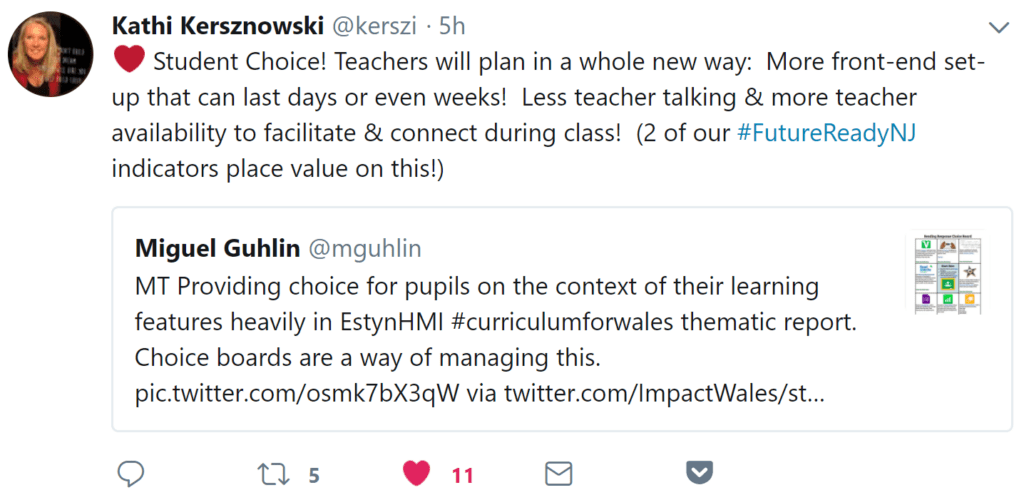Ready to create interactive learning opportunities for students? Take advantage of choice boards. In this blog entry, we’ll explore a few reasons why they are powerful and provide examples you can adapt. First, let’s answer a simple question.
What are Choice Boards?

“Teachers will plan in a whole new way,” says Kathi Kerznowski (@kerszi). Wondering what choice boards are? Some define them as graphic organizers that provide students choices about how they learn. “Choice boards are awesome,” tweets Stacey Noonan (@snoonan44)
“Choice boards are set up in a grid, generally with 9 squares,” says Cassidy Reinken. She says, “You can require that students complete items from the choice board in a specific way.” This can involve expecting students to choose choices in a row, one activity from every colored section or choose at random. You can vary level of difficulty. Cassidy makes four suggestions about choice boards:
- Focus on a single concept or learning expectation.
- Each activity square should relate to a different multiple intelligence.
- Encourage students to complete three activities in a row.
- Each square, with the exception of the interpersonal square, are individual activities.
Watch this short video how to teach with choice boards(updated video):
Why Choice Boards?
Here are ten reasons why choice boards engage learners. Choice boards:
- Facilitate differentiated learning opportunities.
- Can be used in any subject.
- Provide different contexts for students and engage a variety of their senses. These approaches are supported by research (Source).
- Offer learners of all ages choices in how they learn about a new topic or understand a familiar one.
- Provide tiered levels of learning opportunities.
- Serve as a contract between student and teacher.
- Can be adapted for special education or individualized education plans (IEPs).
- Increase student ownership.
- Focus students on essential knowledge, skills, and strategies aligned to curricular goals.
- Make it easy to manage “a single lesson, a week-long lesson, or even a month-long period of study” (Source).
Want to see some examples of choice boards or learning menus?

Source: Ernest Gonzales (San Antonio ISD) shares this interactive learning PDF (choice board)(@ergoEDU)
Where Can I Find Choice Board Examples?
Looking to get started with designing choice boards? Some choice board sources include:
- Tic Tac Toe – Kasey “Shake Up Learning” Bell created this blank choice board for your use. She refers to choice boards as learning menus. She also offers up a Chrome PD Tic Tac Toe. Read her complete blog entry on choice boards.
- Dare to Differentiate – An immense collection of choice boards can be found online at this site in MS Word format.
- Advancement Courses offers links to various choice board collections, including:
- Template for Digital Choice Board – A template that Caitlin Tucker created to aid you.
- And check out this earlier blog from TCEA on choice board implementation
Wondering how to design your own digital choice board? Read Caitlin Tucker’s instructions.
Create Interactive Learning with Choice Boards
Begin with digital choice boards. Use tech tools like Google Docs, Microsoft Word Online, or Microsoft OneNote. Adapt these tools to create choice boards. All of them support tables, image insertion, and sharing with students. Make a digital choice board to facilitate access to activities, and be sure to include multimedia.



Comments are closed.